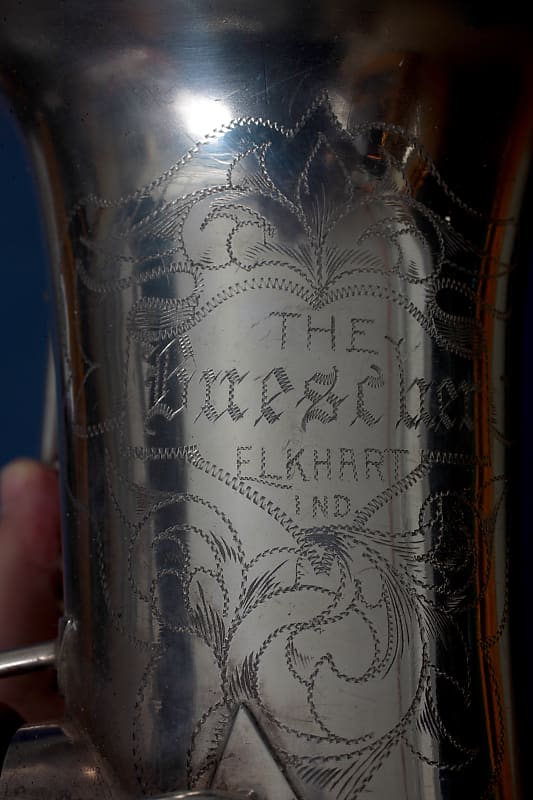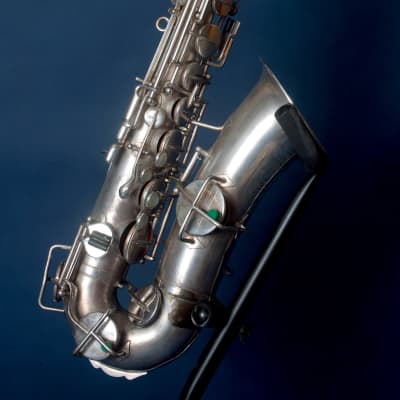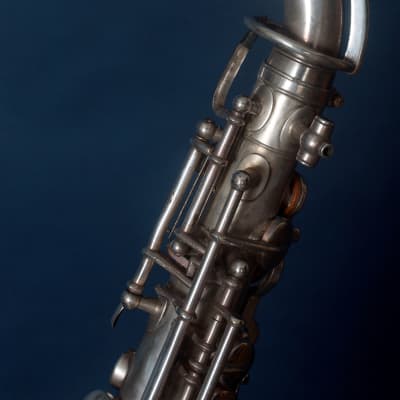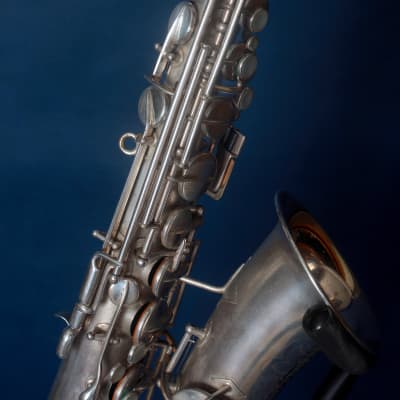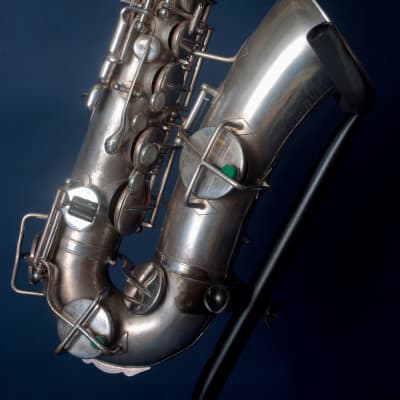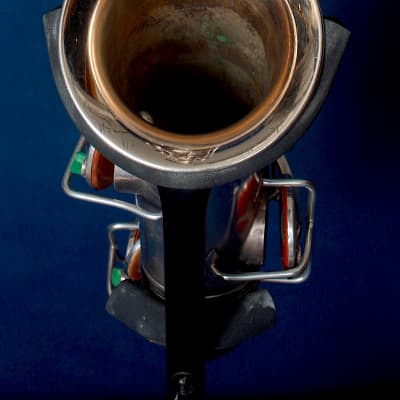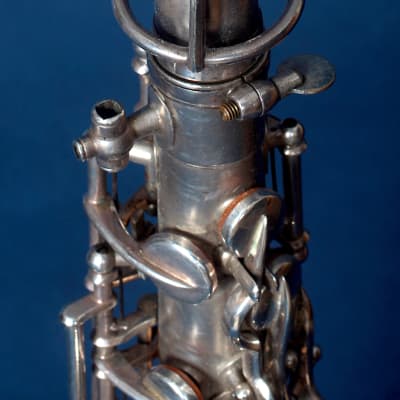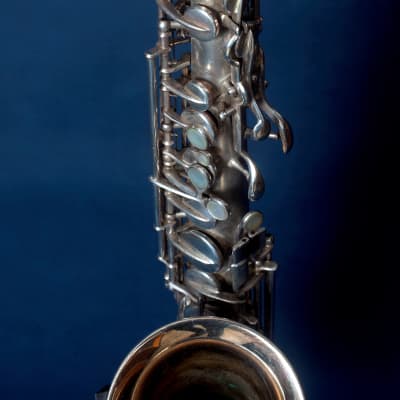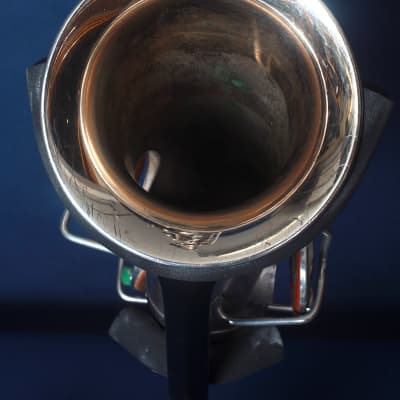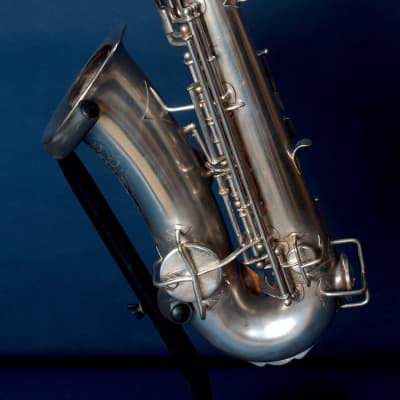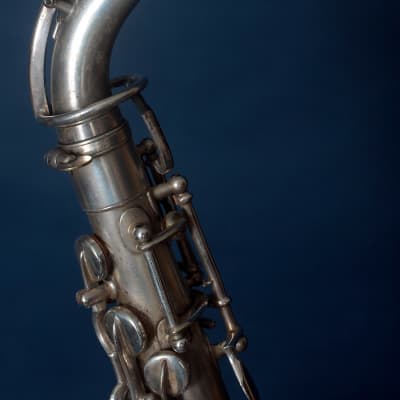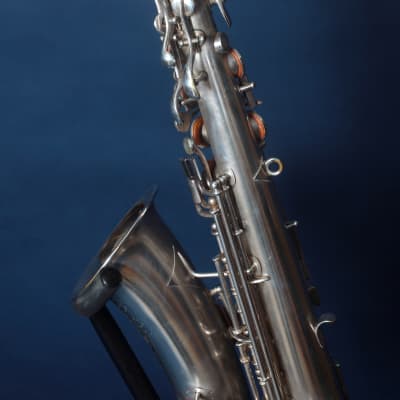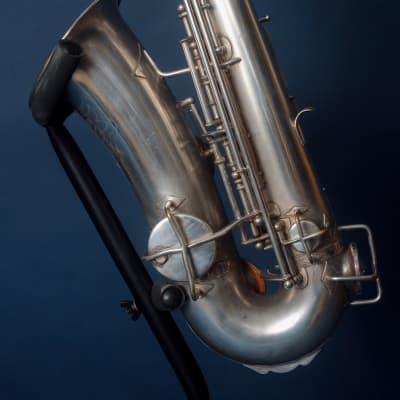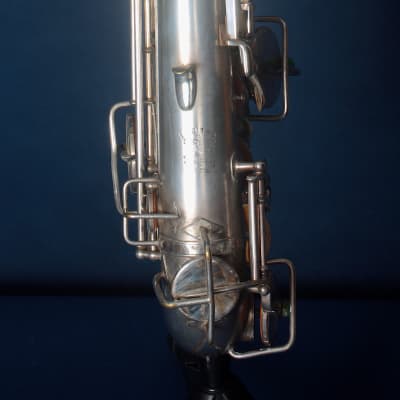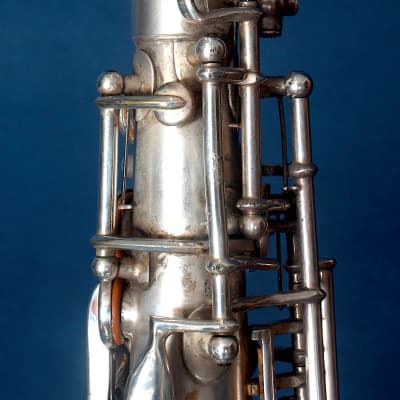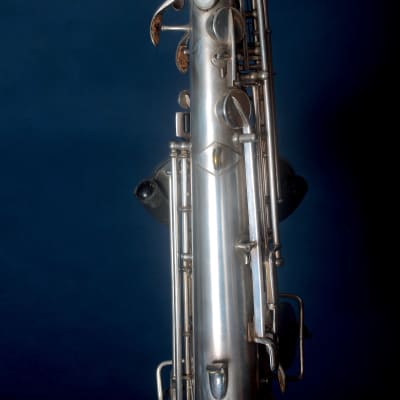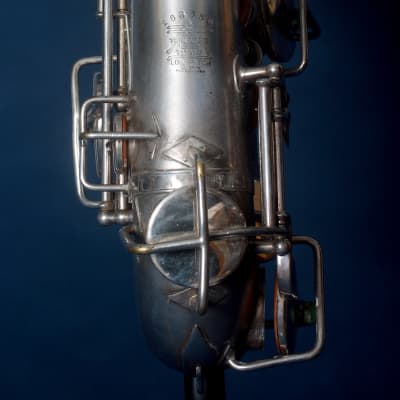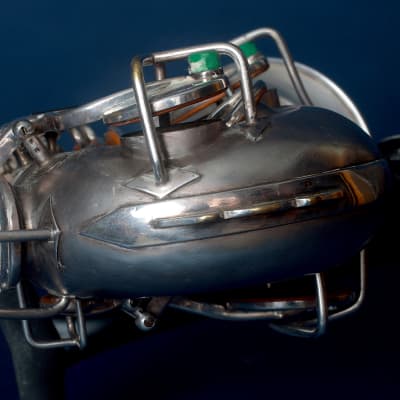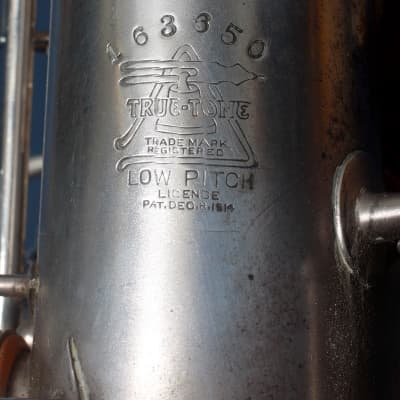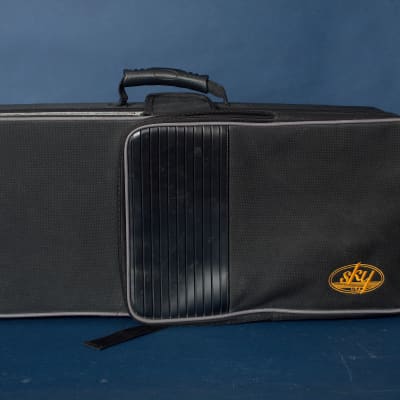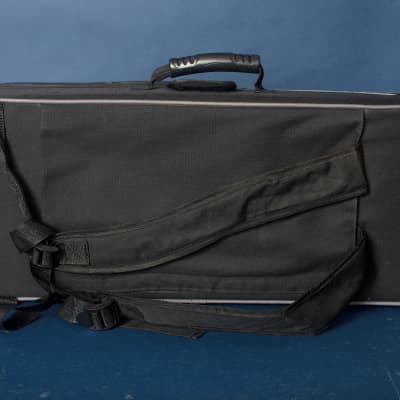Here is a 1924 Vintage Buescher True Tone alto sax, which needs some work, but can be made playable at a modest expense, or could be fully restored should you wish to undertake such a project. This Buescher has a lovely Silver Satin finish, with a Gold Washed Bell and beautifully executed engraving. The Silver finish is tarnished, and heavily so in a couple of spots, but should come up well with some Silver cleaner (try Haggerty’s 100).
Since the neck cork is missing, for the purposes of testing the horn, we put a Bundy II neck on it (a perfect fit) and tested the range. The horn plays well through much of its range, but the low E, D, C & Bb were all leaking. Describing the sound is entirely subjective, of course, but it does have that particular mix of sweet and raspy common to Silver horns of the 1920s and 30s.
As said, the Silver finish is very good, all the springs are in place, and the action works smoothly. The protective baskets are in good shape. The engraving on the bell is pristine. There seems to be just one dent on the horn, a minor one along the front edge of the bell, just above the bow. This Buescher True Tone comes in a recent padded soft case, which is in decent shape, though the zipper from the front pouch is missing.
This horn is being sold as a project and will need some work. Replacing the neck cork and half a dozen pads should make it entirely playable. Long term, it should also be expected that other pads will need to be replaced. The long and the short of it is that for a modest investment, you can get a cool Vintage sound from a very well preserved Vintage horn.
Please be sure to study the photographs carefully, as I have tried to capture the sax from all angles.
Serial #: 163650
This Buescher True Tone is sold AS IS and is not returnable.
Price: $475 (was $575) + $65 shipping
Assessing Instrument Condition
Instrument condition is a concern for sellers and buyers alike, and it is important that we are both on the same page. Often, terms used in defining instrument condition, are somewhat misleading because they only reference appearance, and not functionality. All instruments that we list are defined in the following ways, and under the accompanying understandings:
Brand New - Brand new simply means that it has never been sold, previously. It is safe to assume that a Brand New instrument functions perfectly, but it is NOT necessarily the case that it is without blemishes. Think of going into a guitar store and taking a new instrument off the wall; it will occasionally have dings or scratches that it has picked up by bumping into other instruments or from another person, trying it out. If we sell an instrument as Brand New and it has blemishes, they will be photographed for the listing.
Mint - Mint condition is Flawless. It is an instrument that is both flawless in appearance and perfect in its functionality.
Near Mint - If our listing stresses that the instrument is Near Mint, it may have a cosmetic flaw or two. They will be photographed or described as part of the listing.
Excellent - An instrument in Excellent condition will function perfectly, but may show some signs of use on close inspection. Minor nicks and dings, cloudy spots of finish, or fading color or finish, is all par for the course. The determination of Excellent condition will also depend on the age and overall quality of the instrument. A 1940s Gibson J200 with a scratch or two, a nick in the finish, and even a repaired bridge plate, but otherwise perfect and with a great playing action, can be said to be in Excellent Condition. At the same time, a five year old Gibson J200 with the same blemishes might be considered to be in Excellent Minus condition. And a 1970s era guitar that has been played regularly, gigged out, and has some scuffs and dents to show for it, but which don’t tend to show from a short distance, and which sounds and plays great, is still in Excellent Condition. There is a degree of “it’s all relative,” at work here.
Very Good - An instrument in Very Good condition is still perfectly functional, but will have blemishes, scuffs, dents and dings that are readily apparent, at a reasonable viewing distance (like from the audience to the stage). That instrument also may have signs of prior repairs, or may have been retrofitted or customized with non-original parts. Any of these conditions with an instrument will be photographed and described as part of the listing.
Good - An instrument in Good condition will play well, but perhaps not without some minor issue. For instance, an electric guitar with a scratchy potentiometer, may still be considered to be in Good condition if that pot does not affect the output of the pickup. Or a guitar might lack a tremolo arm or pick guard. The instrument is playable, the part can be replaced if the buyer wishes to do so, and thus it is in good condition. Again, any and all defects or limitations to the instrument will be defined or photographed for the listing.
Fair, Poor or Project - This instrument is most likely to be in need of substantial work to make it fully functional. It may be a violin with an open seam along the back, a guitar with a lifting bridge or non-working pickups, a saxophone in need of a repad, or a guitar or mandolin with a high action and in need of a neck reset.
The Bottom Line - The bottom line is this: Functionality is more important than Aesthetics (though aesthetics ARE important), and the quality and recognized market value of the instrument takes precedence over minor cosmetic concerns. Read the listing carefully. Study the photos thoroughly. Reach out and ask questions first (we are always happy to talk shop!).
